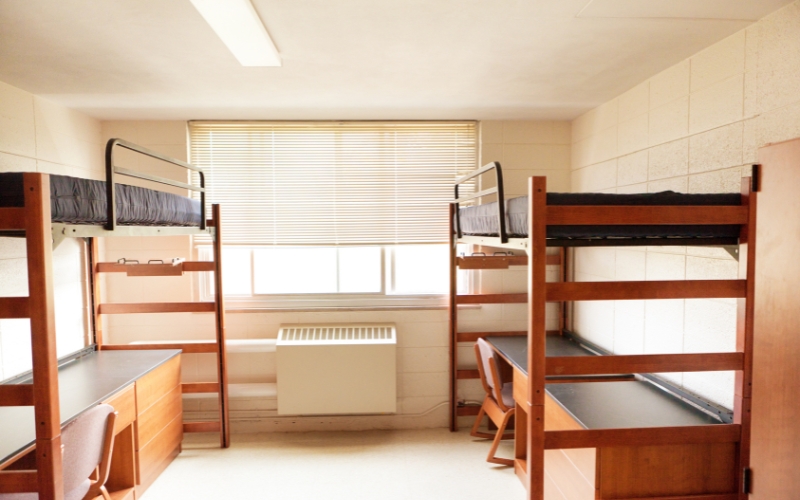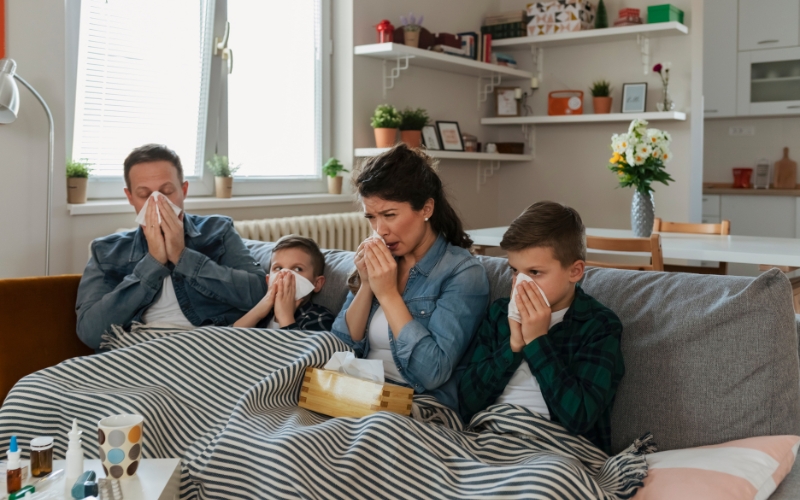When students head off to college, they expect a few things: academic challenges, lifelong friendships, and maybe a less-than-luxurious dorm room. But what many don’t expect or even realize is how common and serious mold problems can be in university housing.
The Perfect Conditions for Mold Growth in University Housing
Universities across the country, from large public institutions to small private colleges, are dealing with an indoor air quality problem that often flies under the radar: mold. It’s more than a nuisance; it’s a health and maintenance issue that quietly affects countless students and staff yearly.
So why does mold thrive in university housing? It comes down to a combination of risk factors:
- Aging infrastructure: Many dorm buildings were built decades ago and haven’t been modernized to address today’s air quality standards. Cracks in the foundation, old windows, and poor insulation all contribute to water intrusion and condensation issues.
- High humidity and poor ventilation: Between shared bathrooms, laundry facilities, and tightly packed rooms, it’s hard to control moisture. When humidity rises above 60%, mold has everything it needs to grow.
- Seasonal use: Dorms often sit unused during the summer or between semesters. If moisture issues go unnoticed, mold can spread long before students move back in.
- Inconsistent reporting and delayed maintenance: Students may not recognize the signs of mold, or they might assume a musty smell is just “part of dorm life.” That delays cleanup efforts and allows mold to grow unchecked.
It’s More Than a Smell — It’s a Health Risk
Mold exposure isn’t just unpleasant. For students with asthma, allergies, or other respiratory issues, it can cause serious health problems. Symptoms might include coughing, sneezing, fatigue, headaches, or even difficulty concentrating, none supporting a positive learning environment.
It’s also disruptive. When mold becomes a significant issue, rooms must be deep cleaned or shut down. Students may need to be relocated. Complaints escalate. And when it makes the news, it damages trust in the institution.
The True Cost of Ignoring Mold
Universities that treat mold as a one-off maintenance problem are missing the bigger picture. This isn’t just about cleaning up spots on the wall—it’s about ensuring healthier living environments for thousands of students. Repeated mold incidents increase liability risks, drive up repair costs, and can even impact enrollment if a university gains a reputation for poor housing conditions.
What Can Be Done About Mold in University Housing?
There’s no single fix, but there are proactive steps universities can take:
- Inspect and maintain HVAC systems regularly to ensure good airflow and humidity control.
- Seal windows and foundations to prevent moisture from getting inside.
- Use dehumidifiers in especially humid climates or older buildings.
- Educate students and staff on how to spot early signs of mold and encourage timely reporting.
And increasingly, universities are turning to continuous microbial reduction technologies that can work in occupied spaces without disrupting student life. Synexis’ patented Dry Hydrogen Peroxide (DHP®) is one such technology, actively reducing mold and other microbes in the air and on surfaces. It works safely and silently, 24/7/365.
While no solution will eliminate the need for physical repairs or maintenance, adding a layer of ongoing protection can help universities stay ahead of the problem rather than reacting to the latest outbreak.
A Healthier Campus Starts With Awareness
The first step to solving the mold problem in university housing is recognizing how common and preventable it is. By understanding the root causes and investing in smarter prevention strategies, colleges can create safer, healthier spaces for students to live, learn, and thrive.
To speak with an IAQ expert from Synexis, fill out this form and we’ll be in touch as soon as possible.
And to learn more about Synexis, click here.








